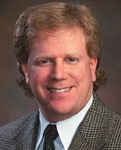Article
ECP at time of phaco effectively lowers IOP
I have been using endoscopic cyclophotocoagulation (ECP) to treat patients with cataract and medically controlled glaucoma for 5 1/2 years and have found it to be a very useful addition to my armamentarium. The procedure is particularly attractive as an adjunct to small-incision cataract surgery. It takes only about 5 to 10 extra minutes to add ECP to phacoemulsification.



Richard J. Mackool, MD, New York, was the first to present the results of combining ECP with phacoemulsification to reduce glaucoma medication requirements. His reasoning was that doing ECP at the same time as phaco through the same incision adds little if anything to the risk of infection. Through his study Dr. Mackool concluded that adding ECP to phaco does not increase the risk of serious complications, and it lowered the number of medications needed to maintain IOP control. The final IOP was the same in the groups that underwent phaco alone or combined phaco and ECP, but the group treated with combined phaco and ECP was taking significantly fewer medications.

The safety record of ECP is better than that of trabeculectomy or shunt surgery. The only known cases of hypotony and phthisis after ECP have occurred in neovascular glaucoma and refractory pediatric glaucoma. There have been no reported devastating complications in phaco plus ECP for primary open-angle glaucoma (POAG).
Benefits, considerations

Newsletter
Don’t miss out—get Ophthalmology Times updates on the latest clinical advancements and expert interviews, straight to your inbox.





